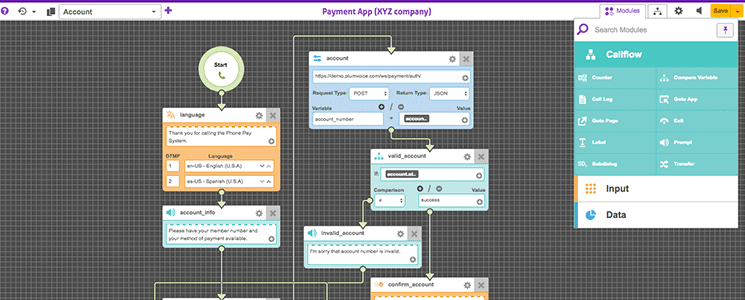
How does Generative AI work?
Generative AI has sparked a revolution in various industries – from art and music to business and marketing. Its integration into interactive voice response (IVR) systems has been especially beneficial, providing customers with a better experience and boosting efficiency. Below, we will investigate how generative AI is boosting the capabilities of modern IVR systems.
The Rise of Generative AI
These models, such as OpenAI’s GPT-4, are capable of generating human-like text, images, and even music based on the data they have been trained on. Generative AI refers to artificial intelligence models that can create new, original content based on their training data. These systems learn from vast amounts of data, which enables them to generate content that is similar to what they have been exposed to, but still unique and creative.
The Rise of Generative AI
These models, such as OpenAI’s GPT-4, are capable of generating human-like text, images, and even music based on the data they have been trained on. Generative AI refers to artificial intelligence models that can create new, original content based on their training data. These systems learn from vast amounts of data, which enables them to generate content that is similar to what they have been exposed to, but still unique and creative.
Interactive Voice Response Systems Using Generative AI
Customer service inquiries, routing calls, and providing information to callers have been handled with IVR systems for years. In the past, these systems used prerecorded messages to guide users through a series of options. In recent years, however, IVR systems have become more sophisticated, versatile, and user-friendly with the integration of generative AI and speech recognition.
Enhancing Natural Language Understanding (NLU)
IVR systems can now better understand accents, dialects, and phrases through natural language processing (NLP). These systems can interpret callers’ spoken requests accurately based on vast amounts of AI-generated data sets using conversational AI technology. This allows them to decipher and route them to the appropriate departments based on the dialog received.
Generating Dynamic Responses
IVR systems have traditionally provided scripted, robotic responses, which may not always be helpful to users. With generative AI and conversational AI, IVR systems can provide context-relevant, human-like responses in real-time without the need for a live agent. As a result, users have a more natural and engaging conversation with the caller.
Personalization has been Improved
Using conversational AI, IVRs are tailored to respond to the caller’s preferences, previous interactions and history. As a result of this level of personalization, users are not only more satisfied but also spend less time on calls, which results in greater efficiency. The introduction of generative AI with the combination of conversational AI will continue to personalize applications as they learn more about the customer, and use company data sets to respond to broader questions.
Solving Problems in a Proactive Manner
Based on previous interactions or the call context, IVR systems powered by generative models can anticipate potential issues or questions. In addition to resolving problems more quickly, this proactive approach can prevent them from occurring in the first place.

Plum Fuse is an intuitive drag and drop, low-code, Graphical User Interface (GUI) tool that allows developers and non-technical users to create and manage interactive voice response (IVR) systems, virtual agents and conversational AI solutions.
Evolution of Generative AI and IVR Systems
The capabilities of generative AI within IVR systems will continue to grow as technology advances. Some of the potential developments in this area include:
Sentiment Analysis
IVR systems powered by a combination of NLP and generative AI models will be able to detect and respond to callers’ emotional states by incorporating advanced sentiment analysis. This will lead to more empathetic and effective customer interactions when you can adapt the conversation based on the caller’s emotions.
Integration with other AI Technologies
Combining generative AI and other conversational AI technologies achieves a more comprehensive and interconnected customer service experience. To provide additional context and improve the IVR system’s ability to serve callers’ needs, computer vision could be used to analyze visual data, such as images or video calls.
Support for Multiple Languages
In the future, generative AI models will become more adept at handling multilingual conversations as they are trained on increasingly diverse data sets. By breaking down language barriers, IVR systems will be able to serve a broader range of customers.
IoT Device Integration
In the future, IVR systems can be integrated with IoT devices to create a seamless and interconnected user experience as the Internet of Things (IoT) continues to grow. An IVR system, for example, could provide energy usage information or troubleshoot issues with a smart thermostat.
Analytics and Reporting for Advanced Users
By providing advanced analytics and reporting software, the combination of conversational AI with generative AI models can help businesses gain valuable insights from their IVR systems. These insights can be used to identify trends, optimize call routing, and improve overall customer satisfaction. Companies can also use this data to make better business decisions and to better understand their customers.
Voice Biometrics and Security of Voice
The integration of voice biometrics into generative AI models will help to ensure callers’ privacy and security as security concerns become more prevalent. Businesses can protect sensitive information and prevent unauthorized access to customer accounts by verifying the caller’s identity through voiceprint analysis.

Voice biometrics identifies specific, identifying characteristics or traits of a speaker, rather than focusing on the words that they say to take an action. Each of our voices has distinguishing features that are determined by our anatomy and behavioral speech patterns. Read more here.
The Benefits of Generative AI in IVR Systems
The integration of generative AI models within an IVR system has numerous benefits for businesses and customers alike. Some of the most notable advantages include:
Improved Customer Satisfaction
A generative AI-powered IVR system can significantly improve customer satisfaction by offering a more human-like, model-trained, and personalized user experience. Callers are more likely to receive accurate and helpful information, resulting in faster issue resolution and a more enjoyable experience.
Efficiencies and Cost Savings
By reducing call duration, the need for a contact center, and the need for human intervention, generative AI can help businesses save on operational costs. AI-powered IVR systems can also help improve customer service representative productivity by freeing them up to handle more complex tasks.
Scalability
IVR systems can scale more effectively as businesses grow. With generative AI, algorithms can learn from new data and adapt to changing customer needs and trends, keeping the IVR system effective and relevant.
An Advantage Over the Competition
By providing an exceptional customer experience, companies that adopt generative AI-powered IVR systems stand out from their competitors. This innovative technology demonstrates a company’s commitment to customer service excellence and can help it to attract and retain customers.
Plum Voice Innovative AI Solutions
Generative AI models with the combination of conversational AI solutions are revolutionizing how IVR systems work, leading to improved customer service, consistent efficiency and competitive advantage. With Plum Fuse and Plum DEV, we’re experiencing the full potential of this innovative technology. As generative AI continues to develop, the customer service industry is sure to reap the benefits – making for a bright future.

